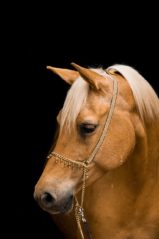Hamster Fat: A Comprehensive Guide to Types, Quantitative Measurements, and Historical Perspectives

Introduction
In recent years, the demand for hamster fat as a dietary supplement has surged among pet owners and health enthusiasts alike. This article aims to provide an in-depth overview of hamster fat, including its various types, popularity, quantitative measurements, differences, and a historical review of their pros and cons.
I. Overview of Hamster Fat

Hamster fat refers to the fatty tissue found in the bodies of hamsters. It is primarily composed of lipids and plays a crucial role in energy storage and insulation. Hamster fat is commonly extracted through a specialized process that ensures purity and quality.
II. Presentation of Hamster Fat
1. Types of Hamster Fat:
a. Mesocricetus Lipids: This type of hamster fat is derived from the Mesocricetus genus of hamsters, which includes popular breeds such as Syrian hamsters. It is known for its high concentration of essential fatty acids and is often used for its potential health benefits.
b. Dwarf Hamster Lipids: Derived from dwarf hamsters, this type of hamster fat differs in composition from that of the Mesocricetus genus. It is lower in lipid content but is still considered a nutritious source of fatty acids.
2. Popularity:
Hamster fat has gained popularity among those seeking natural and nutritious supplements. Its increasing recognition in the fitness and wellness industry has led to a surge in demand for hamster fat products. Various brands and suppliers offer hamster fat-based supplements and food products to cater to this demand.
III. Quantitative Measurements of Hamster Fat
Quantitative measurements are essential for understanding the nutritional value and potential applications of hamster fat. Extensive research has been conducted to determine the percentage of lipids, fatty acids, and other components in hamster fat. These measurements provide insights into the composition and potential benefits of hamster fat used in different products.
IV. Discussion on the Differences between Hamster Fat Types
The different types of hamster fat vary in their composition and potential benefits. Mesocricetus lipids are often preferred for their higher lipid content and essential fatty acids. In contrast, dwarf hamster lipids offer a slightly different nutrient profile. Understanding these differences can help individuals choose the most suitable type of hamster fat for their specific needs.
V. Historical Perspectives on Pros and Cons of Hamster Fat
Through the years, the pros and cons of hamster fat have been debated. Its historical use as a dietary supplement for humans traces back to ancient civilizations. Proponents argue that it is a natural source of essential fatty acids and can potentially support various aspects of health. However, critics raise concerns about its origin, sustainability, and potential side effects. Understanding the historical perspectives surrounding hamster fat can provide a well-rounded view of its potential benefits and drawbacks.
Conclusion
As the popularity of hamster fat continues to grow, it is crucial to have a comprehensive understanding of its types, quantitative measurements, differences, and historical perspectives. This article has provided an in-depth overview of hamster fat, catering to the interests of pet owners and health enthusiasts. By considering these aspects, individuals can make informed decisions regarding the use of hamster fat as a dietary supplement or for various health-related purposes.
FAQ
Hur mycket hamsterfoder bör jag ge min hamster varje dag?
Vad är hamsterfoder och varför är det viktigt för min hamsters hälsa?
Vilka typer av hamsterfoder finns det och vilket är populärt?
Fler nyheter
Den viktiga guiden till hundfoder
Introduction In recent years, the demand for hamster fat as a dietary supplement has surged among pet owners and health enthusiasts alike. This article aims to provide an in-depth overview of hamster fat, including its various types, popularity, quan...
30 november 2025
Veterinär i Sollentuna – din partner i djursjukvård
Introduction In recent years, the demand for hamster fat as a dietary supplement has surged among pet owners and health enthusiasts alike. This article aims to provide an in-depth overview of hamster fat, including its various types, popularity, quan...
02 november 2025
Moosepark i Småland: en oförglömlig upplevelse i älgens rike
Introduction In recent years, the demand for hamster fat as a dietary supplement has surged among pet owners and health enthusiasts alike. This article aims to provide an in-depth overview of hamster fat, including its various types, popularity, quan...
06 oktober 2025
Gladiator Equine: Fir-teknologi med fokus på hästars hälsa och välbefinnande
Introduction In recent years, the demand for hamster fat as a dietary supplement has surged among pet owners and health enthusiasts alike. This article aims to provide an in-depth overview of hamster fat, including its various types, popularity, quan...
06 augusti 2025











